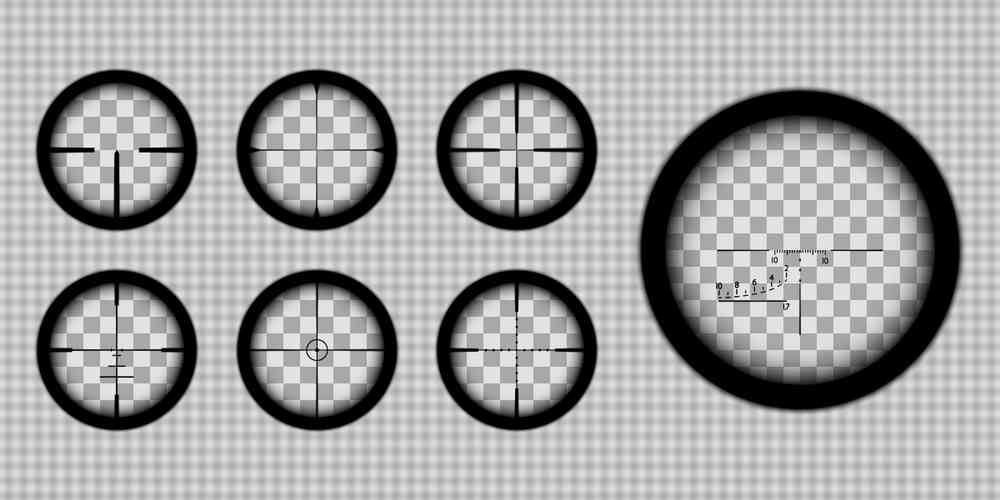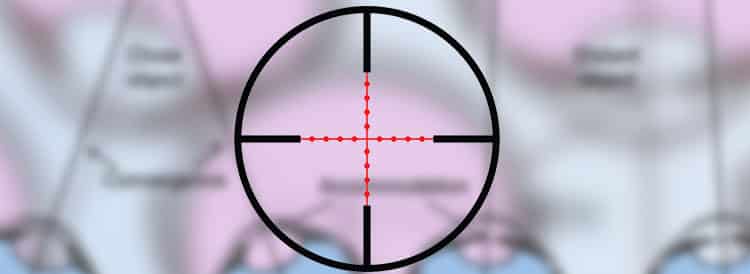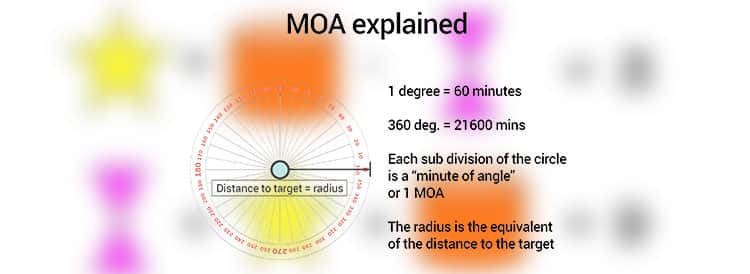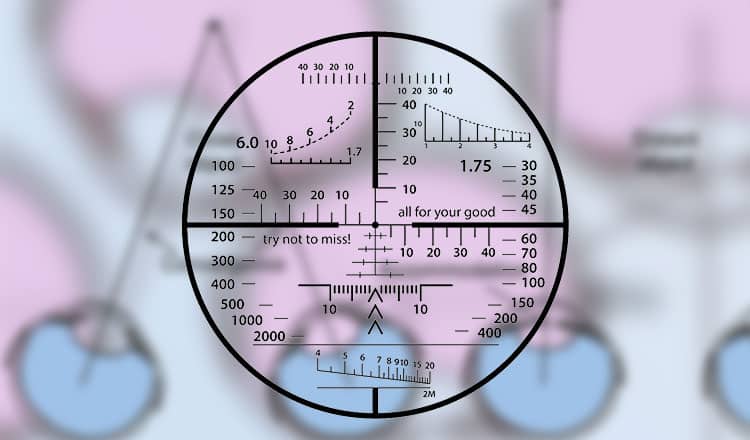Rangefinding reticles are intended to help you figure out the separation from the shooter to the target. The fundamental type of rifle degree is a straightforward Galilean telescope, with a sunken target focal point and an arched eyepiece.
This optics accumulates and uses light to amplify a picture. Riflescopes then use reticules or “crosshairs” as they are even more by and large alluded to fill in as a pointing help.
So, literally, shooting or targeting would have been more difficult and less enjoyable without them. Wouldn’t you agree? Let’s learn how to use a rangefinder reticle to get the perfect range.
The Basics of a Rangefinder Reticle Explained

Rangefinder Reticles: Definition
A reticle, or reticule, otherwise called a graticule, is an example of scarcely discernible differences or markings incorporated with the eyepiece of a locating gadget.
For example, a scope in a telescope, a hunting scope, a magnifying instrument, or the screen of an oscilloscope, to give estimation references amid a visual examination.
How Do Rangefinding Reticles work?
An advanced hunting rangefinder is a gadget that estimates the separation from a person to a target, in a procedure called ranging.
A reticle is a fine line built into sighting devices that will help in measuring the distance between a shooter to the target.
Types of Rangefinding Reticles
An approach to discovering a range in the field is to make a gauge utilizing a basic guideline: the rate at which an item seems bigger or littler is relative to its separation.
In the event that there is an item on the field and a rough gauge can be made as to its size.
For example, a fence post or corn stalk- at that point, its clear size can be utilized to make a conjecture about how far away it is. Rangefinder reticles utilize a similar guideline.
There are different types of rangefinding reticles;
- Mil-Dot Reticle
- TMR (Tactical Milling) Reticle
The main thing to comprehend about rangefinding scopes is that they all have a solitary amplification setting at which the reticle works.
1. Mildot Reticle

A reticle MIL-Dot alludes to the normal, explicit example of a reticle duplex crosshair with 4 little 0.25 mil width spots put along every pivot.
A prepared trainer can gauge the variety of substances of recognized dimension, decide the span of items at known separations, and adjust for the two slugs drip and breeze floats at known reaches with a reticle MIL-Dot prepared degree.
The MIL-Dot reticle can be used at a very high modification.
2. Tmr (Tactical Milling) Reticle

The Tactical Milling Reticle develops existing Mil Dot reticles by utilizing differently measured and separated hash blemishes on the vertical and flat stadia for expanded running exactness, precision, and snappy one-meter run evaluating reference focuses.
It helps a user get an accurate telescopic sight. Reticle pictures are web recreations and not to scale. Real reticle appearance will differ contingent upon the degree of amplification.
How to Use a Rangefinder Reticle Scope?
A range finder for hunting or other purposes features reticles that have to be used wisely. There are procedures for using a rangefinder reticle and if you want the best out of it. Here’s how to use a rangefinder reticle like a Pro:
1. Find the Target Size
For getting started with knowing how to use a rangefinder reticle the right way, the first step is to pick your stature or target size.
When a deer’s chest is eighteen inches, that may be your target. You need to convert the measurement of any fence post into inches. Your targeted size will be 36 inches.
2. Use the Formula to Find the Range
To use the range formula to find the range of the target. You need to use your scope through to look at your target. Many MOA (Minute of Angle) scripts grosses up the Minute of Angle denominator amount.
3. Use the Minute of Angle (MOA)

The vertical line of the reticle is partitioned into 2 MOA additions (approx. 2″ @ 100yds). These vertical augmentations are utilized for range estimation, different zero points, and precise projectile drop remuneration.
4. Understand the Facts About These Calculations
They are flawless and valuable little apparatuses. Since you realize how to utilize a rangefinder reticle, careful discipline brings about promising results.
Rehashing the measurement process, you can easily put an ideal shot without bearing or bobble. It’s a successful situation.
5. Choose the Hash Mark Appropriately
In the event that your range compares to the fifth hash stamp, utilize the fifth hash check as your pointing moment that you shoot. It’s as simple as that.
You have discovered your range and adjusted for it with the reticles of your own special laser rangefinder.
Remember that you should rehearse with the ammo that you intend to use and you would prefer truly not to locate this out amid shooting when you’re gazing intently at the cask at a major!
Congratulations! Now you know how to use a rangefinder scope reticle the best way.
FAQs
1. What is a P4 reticle?
Ans. P4 sniper reticles are specifically designed to enhance your long-range accuracy and the ranging capability under different field conditions. These reticles are divided into 5 MOA increments. A thin reticle line is 1 MOA thick.
2. What reticle does the military use?
Ans. The Army, Marine Corps, and Air Force use the 32mm Trijicon TA31RCO ACOG objective lens that has a 4-time magnification. These ballistic compensating reticles are tritium and fiber-optic illuminated. This allows the military to use the TA31RCO with M16A4 and M4 carbine rifles.
3. What are reticle Subtensions?
Ans. This term means the volume of the area the crosshair covers on your target reticle. Subtensions increase with distance.
4. What reticle is best for hunting?
Ans. The all-around duplex reticle is good for big game hunting where precision is a must to strike the kill zone. No wonder many hunters consider this the best hunting scope.0
5. What magnification do I need for 1000 yards?
Ans. A 10-time magnification is usually enough to shoot 1000 yards. The magnification may vary depending on the glass quality and the target type.
6. How Does a Rangefinder Rifle Scope Work?
Ans. The rangefinder works by projecting a beam of light from the scope onto an object. This light reflects off of that object and returns back to the scope where it is measured. The rangefinder calculates the distance based on how long it took for the light to travel from its source to the object and back again. This information is then displayed in the scope.









Leave a Comment